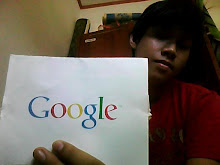Ah, Japan. Land of manga and animé. A land where a culture going back centuries coexists with modern technology. A land which does not possess the traditional hangup of Western culture, the hangup of science (and technology) against religion (and humanity). A land which has produced such technological wonders as the anthropomorphic Asimo robot and the Aibo robotic pet dog. And now – cyber kissing?
These days, you can even call this kissing.
Well – yes.
The Kajimoto Research Laboratory at the University of Electro-Communications in Tokyo aims to create a device which can transmit the virtual feeling of a kiss to a user over the Internet. The procedure is to have the device, which looks something like a manual pencil sharpener with a pencil stuck into it, hooked up to the PCs of a sender and a recipient. The sender’s machine translates the sender’s actions into movements which the recipient can feel as a kiss from the sender.
At the moment, the device is limited to a lever (the “pencil”) which can be moved by the tongue and which, through electrical signals which feed to the motors of a recipient device, will recreate the movement from the sending device. The ultimate goal would be to recreate such other sensory information as taste, tongue moistness and the manner of breathing of both sender and recipient.
Kiss my cyber smooching device!
Given that the repeatability of the experience can be recorded in a computer to create a virtual kiss, this could lead to marketing opportunities for such public figures as celebrities, but there could be other possible applications. Children with a condition where facial muscles don’t properly develop could benefit from it. A speech pathologist, for example, could make the machine part of his tool kit where rehabilitating and strengthening the tongue is concerned.
The device could also help doctors remotely diagnose a patient’s possible problem given the readings it gets on the strength of the tongue muscle when a remote patient is asked to work on the device.
Given that this device is a work in progress – well, I’d rather stick to the real thing for now, thank you.
Source : http://scienceray.com/technology/kiss-someone-online-cyber-mouth-for-cyber-smooching/#ixzz1OK58lE00
These days, you can even call this kissing.
Well – yes.
The Kajimoto Research Laboratory at the University of Electro-Communications in Tokyo aims to create a device which can transmit the virtual feeling of a kiss to a user over the Internet. The procedure is to have the device, which looks something like a manual pencil sharpener with a pencil stuck into it, hooked up to the PCs of a sender and a recipient. The sender’s machine translates the sender’s actions into movements which the recipient can feel as a kiss from the sender.
At the moment, the device is limited to a lever (the “pencil”) which can be moved by the tongue and which, through electrical signals which feed to the motors of a recipient device, will recreate the movement from the sending device. The ultimate goal would be to recreate such other sensory information as taste, tongue moistness and the manner of breathing of both sender and recipient.
Kiss my cyber smooching device!
Given that the repeatability of the experience can be recorded in a computer to create a virtual kiss, this could lead to marketing opportunities for such public figures as celebrities, but there could be other possible applications. Children with a condition where facial muscles don’t properly develop could benefit from it. A speech pathologist, for example, could make the machine part of his tool kit where rehabilitating and strengthening the tongue is concerned.
The device could also help doctors remotely diagnose a patient’s possible problem given the readings it gets on the strength of the tongue muscle when a remote patient is asked to work on the device.
Given that this device is a work in progress – well, I’d rather stick to the real thing for now, thank you.
Source : http://scienceray.com/technology/kiss-someone-online-cyber-mouth-for-cyber-smooching/#ixzz1OK58lE00





















0 Comment: